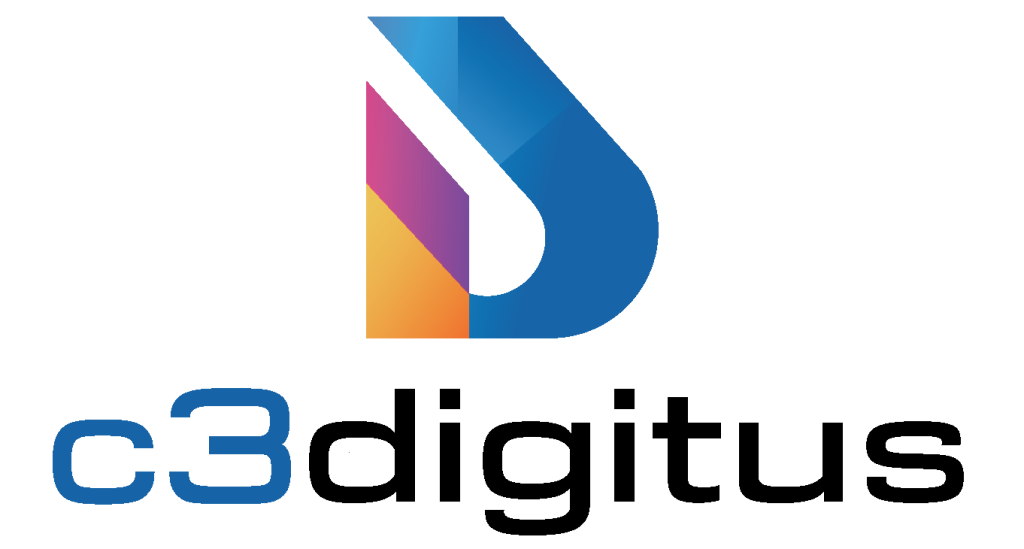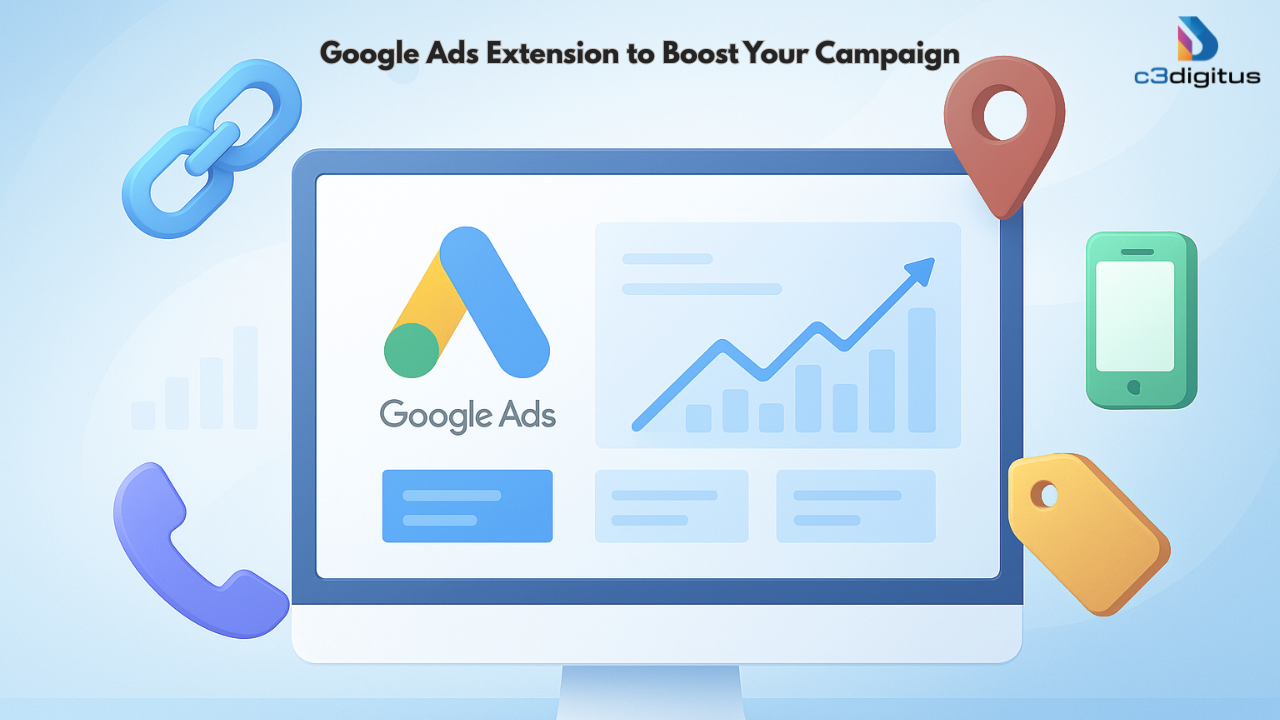A little something extra can go a long way, whether it’s a free dessert with your meal, a surprise upgrade, or that final touch that brings a room together. In the world of digital ads, Google offers its version of “extra”: ad extensions.
These nifty add-ons don’t just boost your ad—they elevate it. In a sea of search results where every click counts, ad extensions help your message rise above the noise, grab attention, and drive real results.
So, stick around if you’re ready to give your ads the upgrade they deserve. We’re diving into what ad extensions are, who should use them, and how to make them work smarter, not harder, for your campaigns.
What Are Google Ads Extensions?
Google Ads extensions are powerful tools that enhance your standard search ads by providing additional information, links, visuals, or ways to interact, without increasing your cost-per-click. These extensions appear beneath or beside your main ad copy and can significantly increase your ad’s visibility, relevance, and click-through rate (CTR). Whether you’re looking to highlight special offers, direct users to specific pages, or make it easier for them to contact you, ad extensions provide that extra layer of value that can make your campaign far more effective. If you’re still evaluating the best partner to manage these campaigns, understanding how to choose the right digital marketing agency can help you make an informed decision.
At their core, Google Ads extensions are optional add-ons to your regular search ads that give users more reasons to click. Instead of showing just a headline and description, extensions allow you to expand your ad with links to specific pages (sitelinks), key benefits (callouts), phone numbers (call extensions), visual imagery (image extensions), and more.
These elements are displayed dynamically based on performance, relevance, and the available space in the search results. When used correctly, ad extensions not only improve user experience but also increase your chances of ranking higher on the search results page by improving your Ad Rank and Quality Score—two critical factors in Google Ads performance.
Why Use Ad Extensions?
There are several compelling reasons to incorporate ad extensions into your campaigns. First, they help boost your CTR by making your ad more eye-catching and informative. With more real estate on the page and more actionable elements, users are more likely to engage with your ad. Second, extensions contribute to a higher Quality Score, which can lower your CPC and improve your ad positioning. Finally, they deliver more value to users in the same space, allowing you to communicate important details upfront, without overwhelming your core message.
AI-powered assets showcased during Google Marketing Live 2025, extensions are smarter and more dynamic than ever, adapting in real-time based on intent, context, and device.
Want to know how you’re performing compared to industry standards? This Google Ads benchmark report breaks down average CTR, CPC, and conversion rates across sectors in 2025.
1. Sitelink Extensions
Sitelink extensions allow advertisers to include additional clickable links beneath the main ad copy. These links lead users to specific pages on the website, such as product categories, contact forms, or featured offers. Sitelinks make your ad more versatile and give users more choices, improving the chances they’ll find exactly what they’re looking for—faster.

Example:
An ad for a digital agency might include sitelinks like:
- Services
- Portfolio
- Client Testimonials
- Contact Us
Benefits:
- Increases CTR by offering more relevant destinations.
- Occupies more screen space, pushing competitors down.
- Directs traffic to high-conversion pages.
Best practices:
To get the most out of sitelink extensions, include at least four unique links that lead to high-value landing pages like your pricing page, testimonials, contact form, or key product categories. Each sitelink should be paired with two short description lines that provide context and increase relevance. Tailor sitelinks to specific campaigns or ad groups for maximum targeting precision and engagement.
2. Callout Extensions
Callout extensions are short, descriptive phrases that appear below your main ad text. Unlike sitelinks, they aren’t clickable. Instead, they highlight specific benefits, services, or selling points like “Free Estimates” or “No Hidden Fees.” Think of them as quick confidence boosters or value points designed to capture interest at a glance.
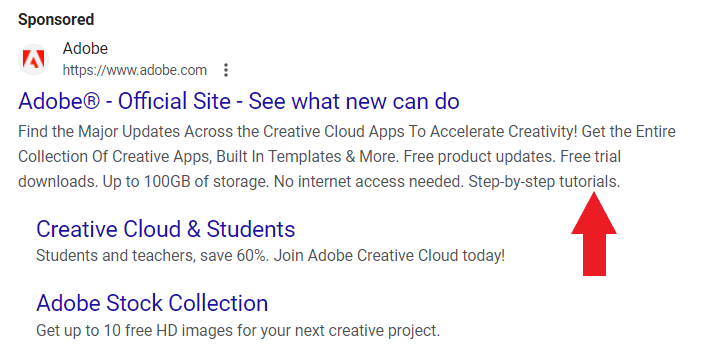
Example:
- Free 2-Day Shipping
- No Setup Fees
- 24/7 Support
Benefits:
- Reinforces key selling points without adding clutter.
- Great for communicating business value in a glance.
- Works across both desktop and mobile.
Best practices:
Use a mix of six to eight callouts that emphasize your brand’s top value propositions, such as “Free Returns,” “Certified Experts,” or “No Annual Fees.” Keep the text concise—under 25 characters—and avoid repetition from your main ad copy. Think of callouts as quick highlights that reinforce trust and differentiate you from competitors.
3. Structured Snippet Extensions
Structured snippets display predefined lists of products, services, or features under a relevant category header such as “Brands,” “Types,” or “Courses.” These extensions give potential customers a clearer idea of what your business offers—without needing to click—by showcasing the breadth or depth of your offerings.

Example:
Header: Services
Values: SEO, Content Writing, Paid Ads, Website Design
Benefits:
- Helps set expectations.
- Improves relevance and CTR by offering more detail.
- Great for showing breadth without linking to individual pages.
Best practices:
Choose a structured snippet header that aligns closely with your offerings—like “Services” for agencies or “Models” for car dealerships—and list at least four to ten specific, relevant values. Maintain consistency in formatting and avoid promotional language. Structured snippets work best when they provide users with a clear picture of your offerings at a glance.
4. Image Extensions
Image extensions let you add compelling visuals next to your text ad on the Google Search Network. These images aren’t clickable individually but serve to enhance your ad’s visibility and draw the user’s eye. This feature bridges the gap between standard text ads and more engaging display-style creatives.

Benefits:
- Improves visual appeal and differentiation.
- Increases clicks by capturing attention.
- Especially useful in competitive verticals (e.g., real estate, retail, hospitality).
Best practices:
Upload high-resolution images that visually represent your brand, product, or service in a clear and appealing way. Use both square (1:1) and landscape (1.91:1) formats to ensure maximum coverage across devices. Avoid using logos, text overlays, or cluttered visuals, and make sure the images are aligned with the message in your ad copy.
5. Call Extensions
Call extensions attach a phone number to your ad, allowing users to click and call your business directly, especially useful on mobile devices. These extensions help businesses that rely on phone leads, such as service providers, restaurants, or emergency services, to generate immediate engagement.
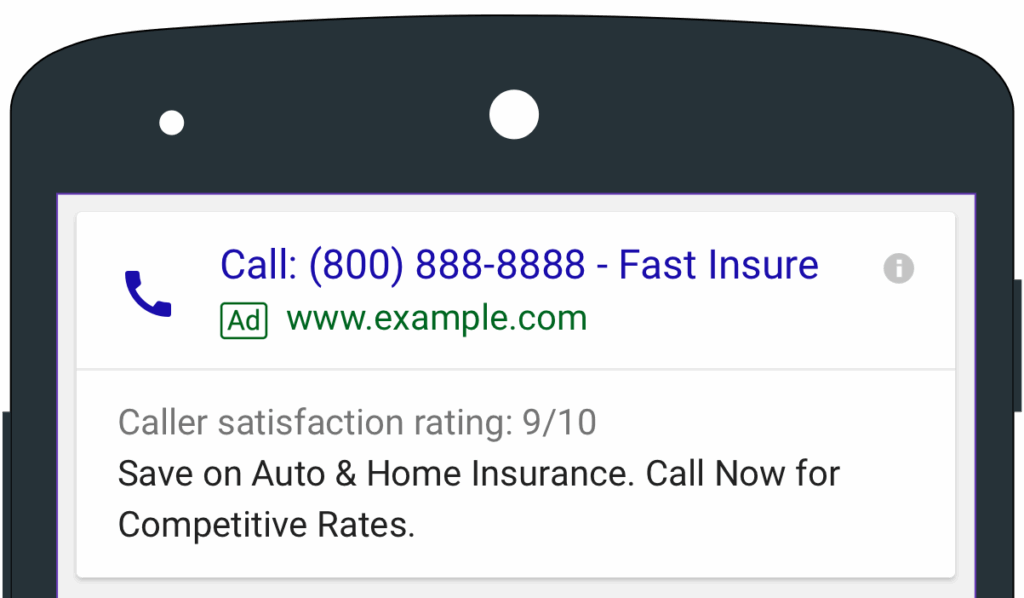
Benefits:
- Shortens the customer journey.
- Great for local businesses or services where phone calls are crucial.
- Increases mobile conversions.
Best practices:
Enable call extensions during your business hours to ensure someone is available to answer incoming calls. Consider using call tracking numbers to monitor performance and gather call data for optimization. For mobile-focused campaigns, make your call-to-action (CTA) direct, such as “Call Now” or “Speak with a Specialist.”
6. Lead Form Extensions
Lead form extensions allow users to submit their contact information—such as name, email, and phone number—without leaving the search results. When someone clicks the ad, a lead form opens directly within the interface. This streamlines the lead capture process and is ideal for service-based or B2B businesses seeking quick conversions.

Data You Can Collect:
- Name
- Email
- Phone number
- Custom questions
Benefits:
- Reduces friction in the user journey.
- Works well on mobile.
- Ideal for service-based industries like real estate, education, and B2B.
Best practices:
Keep your lead forms short and focused by asking only for essential details like name, email, or phone number. Offer a compelling reason for users to submit the form, such as a free quote, consultation, or downloadable resource. Integrate the form with your CRM or lead notification system to ensure timely follow-ups and conversion tracking.
7. Location Extensions
Location extensions display your business address, a clickable map link, and distance information below your ad. They help users find your nearest storefront, making them ideal for physical retail locations, restaurants, and service businesses. This extension integrates with Google Maps to offer directions.

Benefits:
- Drives foot traffic to physical locations.
- Helps local customers discover you.
- Works with Google Maps for directions.
Setup Tip:
Link your Google Ads account with your verified Google Business Profile.
Best practices:
Make sure your Google Business Profile is verified and synced with your Google Ads account. Keep your business information—address, phone number, hours—accurate and up to date. Use location targeting and bid adjustments to focus on users near your store, and consider enabling location-based conversion tracking to measure foot traffic.
8. Affiliate Location Extensions
Affiliate location extensions are designed for manufacturers or national brands that don’t sell directly to customers. Instead, they showcase nearby retailers or outlets where the product can be purchased. This is useful for driving in-store visits to third-party sellers like big-box retailers or chain stores.
Best for:
- CPG brands
- Electronics
- Automotive accessories
Benefits:
- Supports retail distribution partners.
- Helps drive customers to available inventory locations.
Best practices:
Use affiliate location extensions if your products are sold through retail partners rather than directly. Select reputable store chains or outlets that users are likely to visit. Customize your ad copy to mention product availability in these stores, and geo-target the campaign to drive foot traffic in relevant regions.
9. Price Extensions
Price extensions provide users with a scrollable list of your products or services, complete with names, brief descriptions, and actual pricing. Each option includes a clickable link to the respective page. This extension helps filter out non-buyers early by clearly stating your pricing structure upfront.
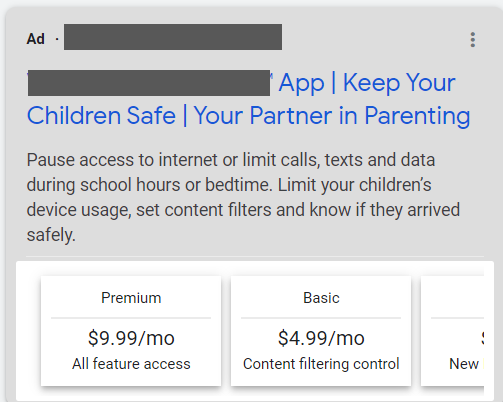
Example:
| Starter Plan | $19/month | Basic tools for small teams |
Benefits:
- Improves transparency.
- Allows users to compare your offerings upfront.
- High-intent users click when the price aligns with expectations.
Best practices:
List clear and competitive pricing that reflects what’s shown on your landing page to maintain consistency and reduce bounce rates. Write short, benefit-driven descriptions that make each offering stand out. Regularly update the pricing to match ongoing promotions, and organize the list to lead with your best-performing or most popular items.
10. App Extensions
App extensions enable businesses to promote mobile apps directly in the ad by adding a download link to the app store (Google Play or Apple App Store). When clicked, users are taken directly to the download page. It’s an ideal way to increase installs and visibility for mobile-first companies or service apps.
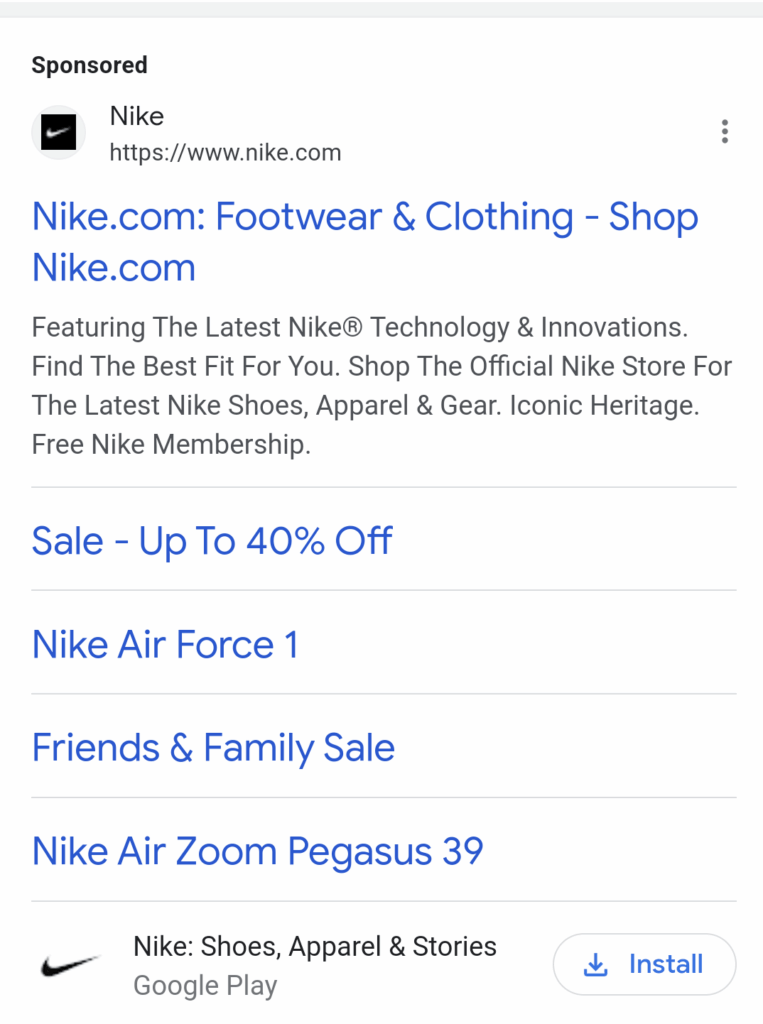
How it works:
When someone clicks, they’re directed to the app store (Google Play or Apple App Store).
Benefits:
- Encourages mobile engagement.
- Perfect for SaaS, entertainment, or retail apps.
Best practices:
Target app extensions to mobile users only and use ad copy that highlights the app’s unique benefits, such as “Order in Seconds” or “Exclusive In-App Deals.” Ensure the download link leads directly to the appropriate app store page. For campaigns focused on installs, use conversion tracking to monitor which keywords and creatives are driving downloads.
11. Promotion Extensions
Promotion extensions highlight special deals or limited-time discounts, accompanied by a price tag icon for visibility. They allow you to showcase offers like “20% Off” or “Buy One Get One Free,” with optional promo codes, dates, and conditions. These are attention-grabbing and often increase urgency and engagement.

Additional Options:
- Add coupon codes.
- Show sale start/end dates.
- Schedule around holidays (Black Friday, New Year, etc.).
Benefits:
- Drives urgency and FOMO.
- Boosts seasonal campaign performance.
- Make your ad stand out with a visible price tag icon.
Best practices:
Use time-sensitive language like “Limited Time Only” or “Ends Soon” to create urgency and drive immediate action. Align the promotion with active discounts on your website and include optional coupon codes or start/end dates for clarity. Schedule your promotions strategically around holidays or seasonal events for maximum impact.
12. Automated Extensions
Automated extensions are dynamically generated by Google based on your ad content, landing page, and account history. Google may add sitelinks, callouts, or other enhancements automatically when it predicts a performance boost. These extensions require no manual setup and run in the background to support your ads.
Benefits:
- Saves time and effort.
- Automatically improves performance if well-aligned.
- May increase CTR even when no manual setup is done.
Caution:
You can opt out if you prefer to manually control your ad messaging.
Best practices:
Although automated extensions require no setup, it’s a good idea to regularly review their performance in your Google Ads dashboard. If an automated extension consistently underperforms or doesn’t align with your brand voice, consider opting out in favor of manually crafted versions. Use a mix of both automated and manual extensions for broader coverage and better control.
FAQs:
1. Are ad extensions available for all types of Google Ads campaigns?
No. Ad extensions are primarily available for Search campaigns. Some extensions (like image or call) may also be eligible for Display or Video campaigns, but they’re most effective in Search campaigns.
2. Can ad extensions affect my Ad Rank?
Yes. Google considers the use and expected impact of extensions when calculating Ad Rank. High-quality and relevant extensions can help improve your ad’s position in the auction.
3. How many ad extensions should I use per campaign?
Google recommends using all relevant extensions. There’s no strict limit, but aim for at least 4–6 extensions per campaign to increase ad visibility and eligibility across formats.
4. Can I schedule ad extensions to run only during specific hours?
Yes. You can schedule extensions like call or promotion extensions to appear only during business hours or specific dates and times—perfect for timed sales or availability.
5. How does Google decide which extensions to show in an auction?
Google uses a combination of Ad Rank, expected impact, relevance, user context, and available screen space to determine which extensions are shown. Ads with higher Ad Rank have a better chance of displaying multiple and more advanced extensions.
6. Are there character limits for ad extensions?
Yes. Most extensions have character limits:
Callouts: up to 25 characters
Sitelink text: 25 characters (headline), 35 characters (descriptions)
Structured snippet values: 25 characters each
Adherence is crucial, as longer content may be truncated or disapproved.
7. Can I apply ad extensions at different levels of hierarchy (account, campaign, ad group)?
Yes. Google Ads allows you to assign extensions at the account, campaign, or ad group level. More specific levels override broader ones. For instance, an ad group-level sitelink will take precedence over a campaign-level one.
8. Are Google Ads extensions available through the API (Google Ads API)?
Yes. All major ad extensions can be managed via the Google Ads API (formerly AdWords API). This includes creating, editing, scheduling, and reporting on extension performance programmatically.
9. How does Google calculate Ad Rank, and what factors influence it beyond just bid amount?
Ad Rank is determined by a combination of your bid, Quality Score (expected CTR, ad relevance, and landing page experience), ad extensions, expected impact of formats, and search context (like user device, location, and time). Even with a lower bid, high-quality ads and effective extensions can help you outrank competitors.
10. What’s the difference between standard and responsive search ads in terms of structure and performance?
Standard search ads are static and require manually written headlines and descriptions, while responsive search ads (RSAs) allow you to input multiple headlines and descriptions, which Google then tests in different combinations. RSAs tend to perform better over time due to machine learning optimization, but require broader message coverage.
11. How do conversion actions and attribution models impact Google Ads optimization?
Setting the right conversion actions (like purchases, form fills, calls) and selecting an appropriate attribution model (e.g., data-driven, last click, linear) directly influences how Google evaluates campaign success and distributes credit. This, in turn, affects bidding strategies and budget distribution in smart campaigns.
12. How does audience targeting in Search campaigns differ from keyword targeting?
While keyword targeting matches your ads to search queries, audience targeting lets you layer in additional criteria like in-market segments, remarketing lists, or demographics. This allows for more precise message delivery and can improve conversion rates when combined with keyword intent.
13. What role does Quality Score play in Google Ads campaign performance and cost efficiency?
Quality Score is a diagnostic tool scored from 1–10 that reflects how relevant your ads, keywords, and landing pages are. A higher score typically leads to lower CPCs and better ad placements, while a low score indicates the need for improvement in ad copy, user experience, or keyword alignment.
